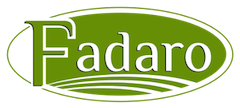Running a restaurant has never been easy, and in today’s climate, it feels like the challenges keep piling on. Rising food costs, labor shortages, and inflation stretch many NYC food businesses thin. Now, with Trump’s proposed tariffs adding a whole new layer of uncertainty, it’s no surprise that many chefs and owners are feeling the pressure.
For businesses that depend on global ingredients and razor-thin margins, these new trade policies could seriously disrupt day-to-day operations and long-term planning, especially in a fast-paced, high-demand environment like New York City.
Trump’s Tariffs Plan: What You Need to Know
In the last few months, uncertainty and tension have grown. This is especially true for industries hit by tariffs on imported goods. Trump has repeatedly announced, adjusted, and delayed tariff plans, leaving investors, producers, and consumers on edge.
The government set a 25% tariff on goods from Canada and Mexico. However, it has now delayed tariffs on USMCA-compliant goods indefinitely. This means that many food products from the USA’s neighbors will not face new tariffs for now. Reciprocal tariffs have also been postponed for 90 days, except for China.
Tariffs on imports from China can reach 145%. There’s also a new 10% baseline tariff on goods from most countries. These changes are already disrupting the food industry and the wider U.S. economy.
The trade war is leading other countries to impose tariffs. This creates instability and starts to burden American businesses and consumers. This big change in US foreign policy has raised fears of a recession. Experts, like those at JP Morgan warning about the possibility of a recession occurring this year. According to Bloomberg experts, this dramatic shift in US foreign policy has sparked fears of a recession. Even with some delays, the average tax on imports has climbed to 24%, up nearly 22% since Trump began his second term.
How Do Tariffs Work?

Tariffs are taxes on imported goods. Importers pay these taxes. They often pass them to wholesalers, restaurants, and diners.
The result is rising prices and strained supplier relationships, which are hurting restaurants. These problems hit those who depend on imported ingredients and equipment. These significant operational issues add to their struggles.
How Trump’s Tariffs Are Impacting the Restaurant Industry
Restaurants and food businesses depend on a global trade system. This makes them vulnerable to price changes and market fluctuations.
Unlike some industries that can lobby for exemptions, restaurants have no such relief. When tariffs impact many ingredients, drinks, and materials, owners must make hard choices. They must choose to raise prices, cut portion sizes, lower quality, lay off workers, or even close down.
New York City’s restaurant industry is more vulnerable than most. The city’s diverse food culture depends heavily on a global supply chain, with specialty ingredients sourced from all over the world. That’s where tariffs can hit hard.
And when enough restaurants suffer, the entire food economy feels the impact: suppliers and farmers lose reliable partners, and the chain begins to break.
Here is what the hospitality industry is up against:
1. Unpredictability
Restaurants rely on a broad network of suppliers from around the world. This makes them vulnerable in many ways. Restaurant owners expect cost increases, but don’t know when, how much, or which products will be affected.
Meanwhile, planning menus, procurement, and pricing becomes difficult as tariffs change.
This buildup of uncertainty, added to a tough 2024, feels like a breaking point, and this is especially true for independent restaurants, which don’t have the same resilience as large franchises.
2. Rising Costs
New tariffs are expected to drive up prices across the board for ingredients, equipment, and even packaging:
- Specialty imports like olive oil, French cheeses, Scottish salmon, and Asian spices might raise prices.
- Essential goods like coffee (the U.S. imports 99% of its supply) could see 4% or more price spikes.
- Seafood, fresh produce, drinks, packaging, kitchen tools, and tableware will likely cost much more.
Rising costs could come as a big blow for independent restaurants already operating on razor-thin margins, especially after years of mounting financial pressure. Chinese restaurants already feel the impact of steep tariffs on imports from China. Many owners struggle to find specialty ingredients not available nearby.
After Trump initially announced reciprocal tariffs in early April, the National Restaurant Association’s CEO, Michelle Korsmo, has released a statement outlining the restaurant industry’s concerns:
“Applying new tariffs at this scale will create change and disruption that restaurant operators will have to navigate to keep their restaurants open. The biggest concerns for restaurant operators—from community restaurants to national brands—are that tariffs will hike food and packaging costs and add uncertainty to managing availability, while pushing prices up for consumers.”
Korsmo highlighted the challenges of covering the country’s food needs without relying on imports:
“Restaurant operators rely on a stable supply of fresh ingredients year-round to provide the menu items their customers want and expect. Many restaurant operators source as many domestic ingredients as they can, but it’s simply not possible for U.S. farmers and ranchers to produce the volumes needed to support consumer demand.”
3. A Chain Reaction Across the Food System
Since the global food system is so complex and interconnected, tariffs ripple back through its entirety:
- Farmers face higher input costs on vital supplies like fertilizer, machinery, and imported feed.
- Wholesalers are also forced to raise prices in the face of higher costs and supply chain disruptions.
- Gas prices could climb, making ingredient transportation more expensive.
- Retaliatory tariffs could cut off American farmers from global export markets, further driving domestic food prices upward.
In short, the farmers that restaurants rely on could be squeezed from both ends, struggling with higher costs and fewer customers.
Products Affected by Tariff Hikes

Here are some of the key products facing higher costs due to new tariffs:
Specialty Foods
- Olive oil from Italy, Spain,, and Greece
- European cheeses
- Scottish salmon
- Spanish seafoods like octopus and anchovies.
- Asian products, like soy sauce, sesame paste, ginger, and chiles.
- Cocoa & chocolate
- Cashews, pecans, and macadamia nuts
- Rice from Thailand and India.
- Beef from New Zealand and Australia.
- Coffee
Beverages
- Imported wines from France, Italy, Chile, and Australia
- Specialty beers from Europe.
- Imported spirits and non-alcoholic beverages containing imported ingredients.
Seafood and Produce
- Tropical fruits from Guatemala, Costa Rica, and Peru.
- Fresh and processed fruits and vegetables from China.
- Shrimp and seafood products from China and Southeast Asia.
Kitchen Equipment and Packaging
- High-end china, glassware, and cookware from Europe and Asia.
- Specialized paper goods and packaging are made with imported materials.
How Can the Restaurant Industry Adapt to Rising Tariffs?

Restaurants are now forced to navigate a new wave of challenges unlike anything they’ve faced before. Volatility and uncertainty are some of the biggest disruptors for the industry, as restaurant owners struggle to plan menus, manage costs, and make long-term purchasing decisions without knowing which ingredients will remain affordable or even available in the coming months.
For chefs juggling rising costs, staff shortages, and shifting trends, it’s one more curveball in a game that never seems to slow down. But with the right strategies and support, it’s still possible to stay nimble, protect your margins, and keep delivering the experience your customers love.
Here are some ways to cope with tariffs and market volatility:
- Simplify the Menu: Focus on versatile dishes that use widely available or locally sourced ingredients. Eliminate low-profit items, introduce LTO’s to minimize waste, and apply other menu engineering strategies to make the most out of every ingredient.
- Negotiate with Wholesalers: Secure long-term pricing where possible and explore alternative sourcing channels. A strong, transparent relationship with your wholesaler can make all the difference during times of uncertainty.
- Educate Diners: Be transparent about sourcing challenges and rising costs. Customers are more likely to accept higher prices when they understand the reasons behind them.
- Diversify Supply Chains: Reduce dependence on any one region, supplier, or product to protect against future disruptions. With NYC’s strong local food network, you have a wealth of options to explore for sourcing ingredients more locally. You can shield your restaurant from sudden price spikes or shortages by cutting back on your dependence on overseas suppliers.
- Stay Agile: Watch tariff changes closely. Be ready to adjust your purchasing, pricing, and inventory strategies quickly..
Implement Technology in Your BOH: Use inventory management and forecasting tools. These can help reduce waste, optimize purchasing, and track real-time cost changes.
The Importance of a Reliable Wholesaler
In times of market uncertainty, a trusted wholesaler can be your greatest asset. When chefs search for wholesale produce near me, they’re looking for reliability, quality, and consistency. Here’s why wholesale suppliers are essential to your restaurant’s success:
- Flexible Sourcing: Wholesalers like Fadaro source from many regions, both local and global. This helps to keep a steady supply available.
- Stable Pricing: Strategic purchasing and inventory management can help protect you from sudden price spikes.
- Consistent Quality: A reliable wholesaler helps you maintain consistency and avoid the disruptions of a volatile supply chain.
- Expert Guidance: A knowledgeable supplier can offer valuable insights, trend forecasting, and strategic advice to help you stay ahead.
Dependable Delivery: Reliable, on-time deliveries keep your kitchen running smoothly, no matter how the market shifts.
Secure Your Supplies with Fadaro Foods
With tariffs and market shifts making headlines, restaurants face a new level of unpredictability. Now more than ever, staying flexible and well-supplied is the key to staying ahead.
At Fadaro Foods, we know how tough it is out there. That’s why we’re committed to helping restaurants across NYC and Bergen County get the quality ingredients they need. From fresh local and seasonal produce to pantry staples and hard-to-find specialty items, we provide a consistent supply, competitive pricing, and personalized support.
Let us take the stress out of sourcing so you can focus on what you do best: serving great food.

Fadaros’ editorial team is dedicated to creating high-quality, insightful content that helps food businesses navigate the challenges of the wholesale industry. We aim to empower you with practical advice, expert insights, and resources tailored to your needs. By aligning with our brand’s mission of helping you grow and build a successful future, we aim to be a trusted partner every step of the way, ensuring your success remains our top priority.






